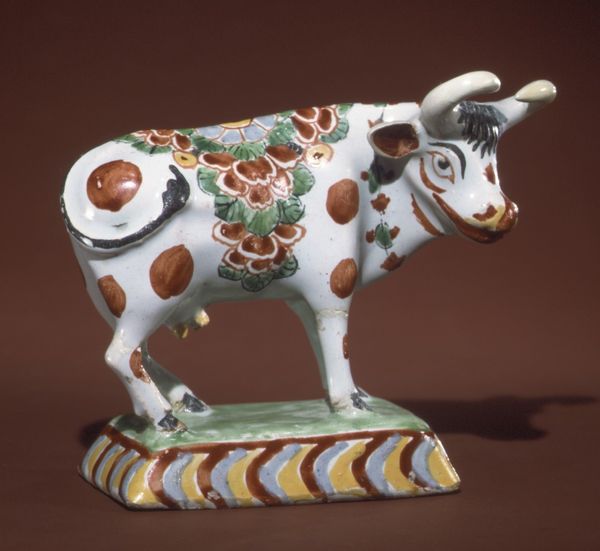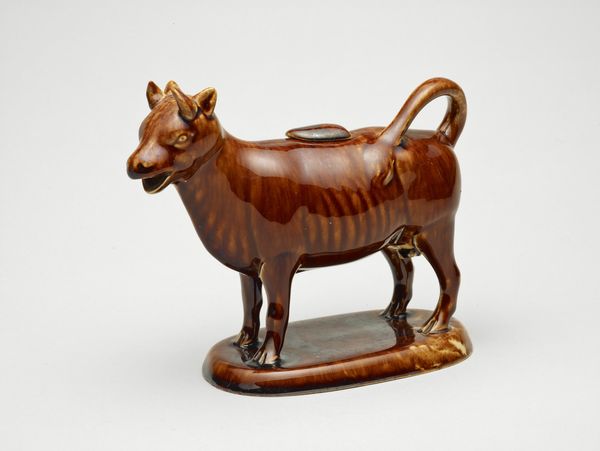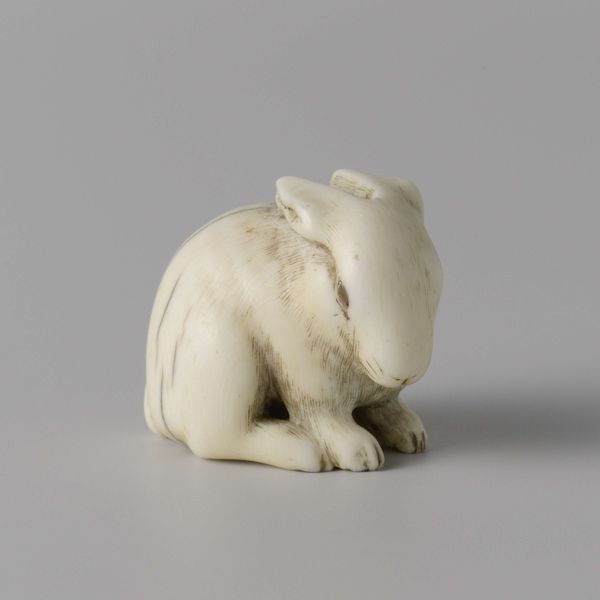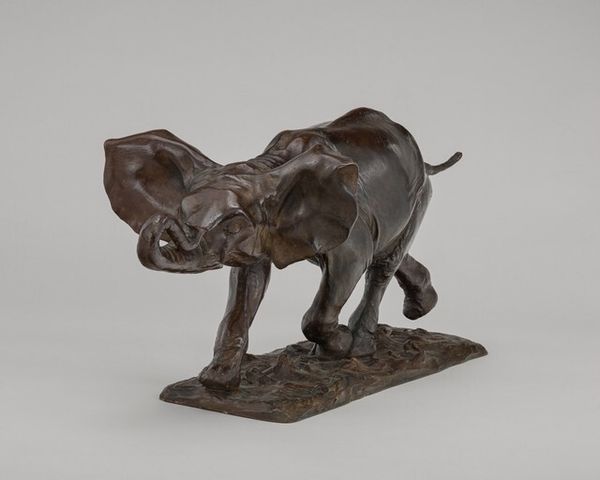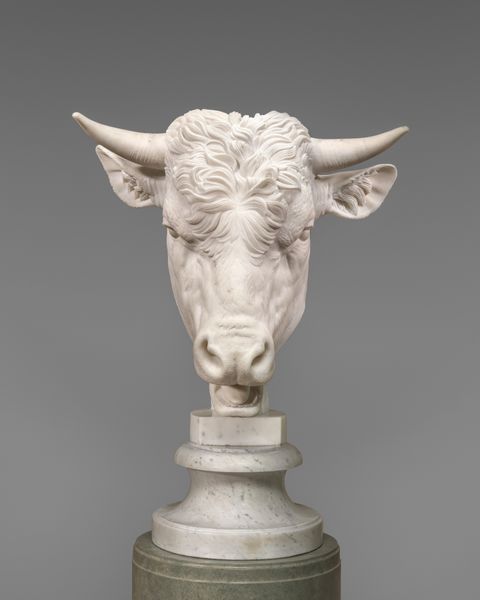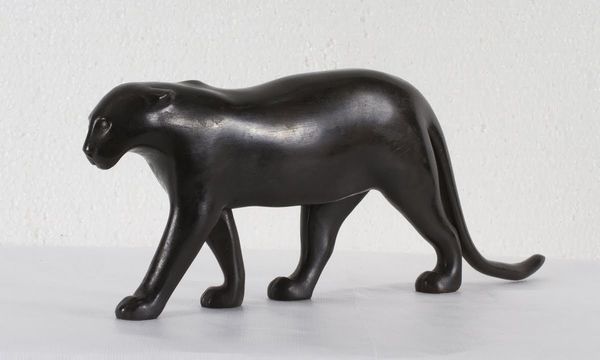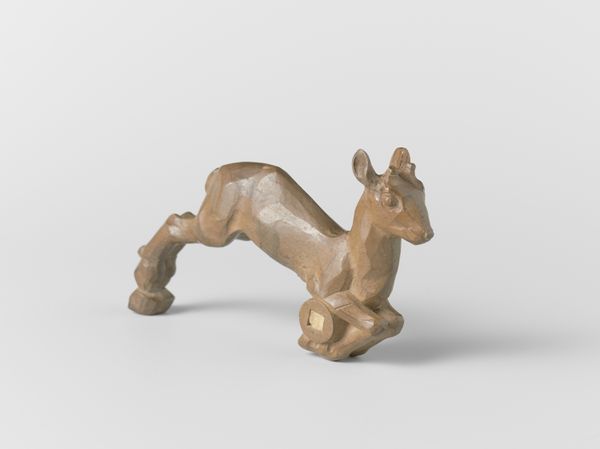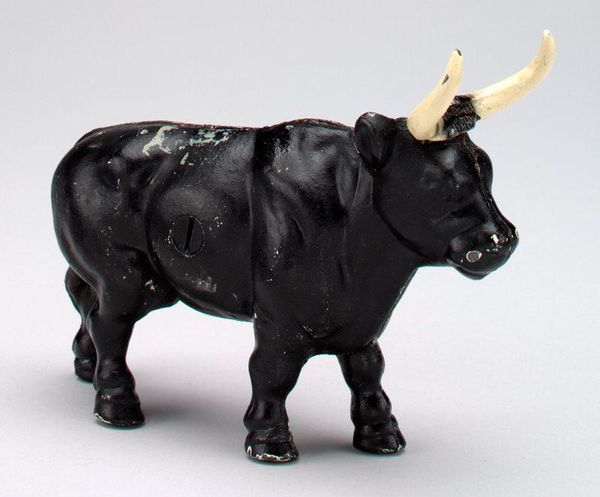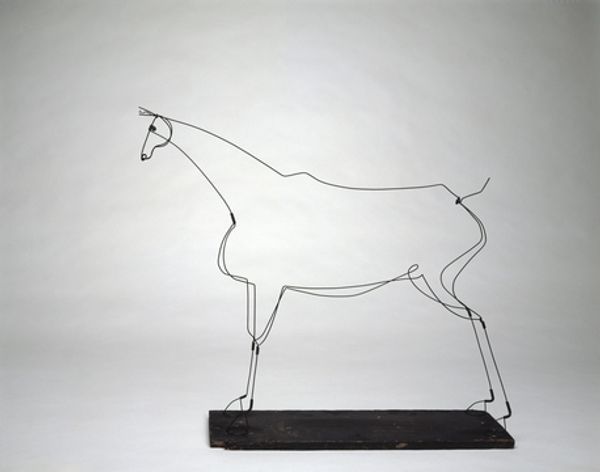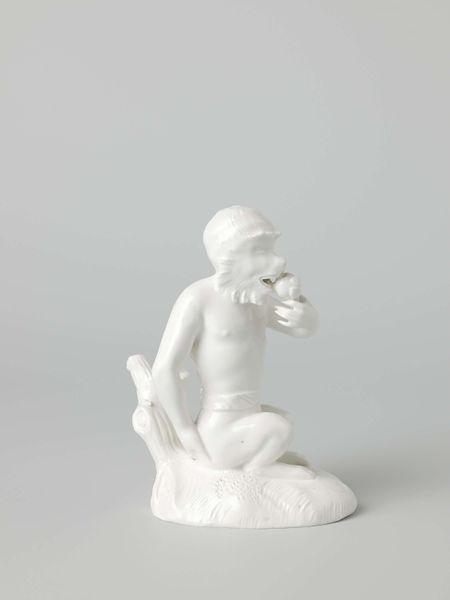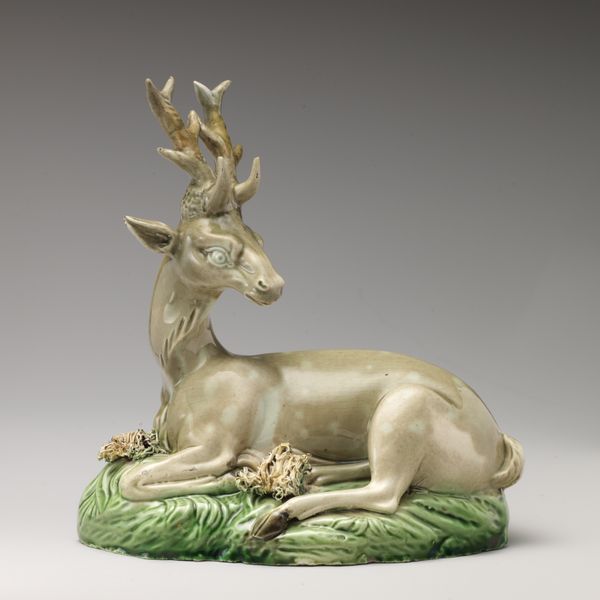
ceramic, sculpture
#
animal
#
dog
#
ceramic
#
figuration
#
sculpture
#
rococo
Dimensions: height 11.6 cm, width 16 cm
Copyright: Rijks Museum: Open Domain
Editor: Check out this porcelain sculpture made around 1760 by Porzellanmanufaktur Nymphenburg, it's just titled "Dog." It seems like an intimate snapshot of a dog in action; it's crouched down, as though sniffing something interesting! What stands out to you about it? Curator: What strikes me is how this seemingly simple object reflects broader social trends. Consider the Rococo period in which it was made. We see a rise in domesticity and private life among the aristocracy and the bourgeoisie. Could this "Dog," crafted from fine porcelain, be a manifestation of this new focus on the domestic sphere? Think about who would commission or buy such an object and what owning this might represent for the owners. Editor: That's a fascinating point! It suggests the dog isn't just an animal, but also a symbol of wealth, companionship, or status. Curator: Exactly. The meticulous crafting of porcelain figures also represents artistic and industrial innovation. Nymphenburg, among other porcelain factories, were often supported by monarchs to increase prestige through national craft production. Editor: I see, it's a confluence of economic and cultural shifts reflected in something as small as a porcelain dog. What would be its role? Curator: Its role probably was decorative but not merely aesthetic: This piece played a part in the larger narrative of how individuals in that era sought to construct their identities and assert their place in the world through material objects. Editor: So looking closely reveals larger stories! Curator: Yes, even something small like a porcelain dog gives insights into the political economy that defined the art world and upper-class European identity. Editor: I’ll definitely look at art through the lens of culture and economy moving forward. Thanks!
